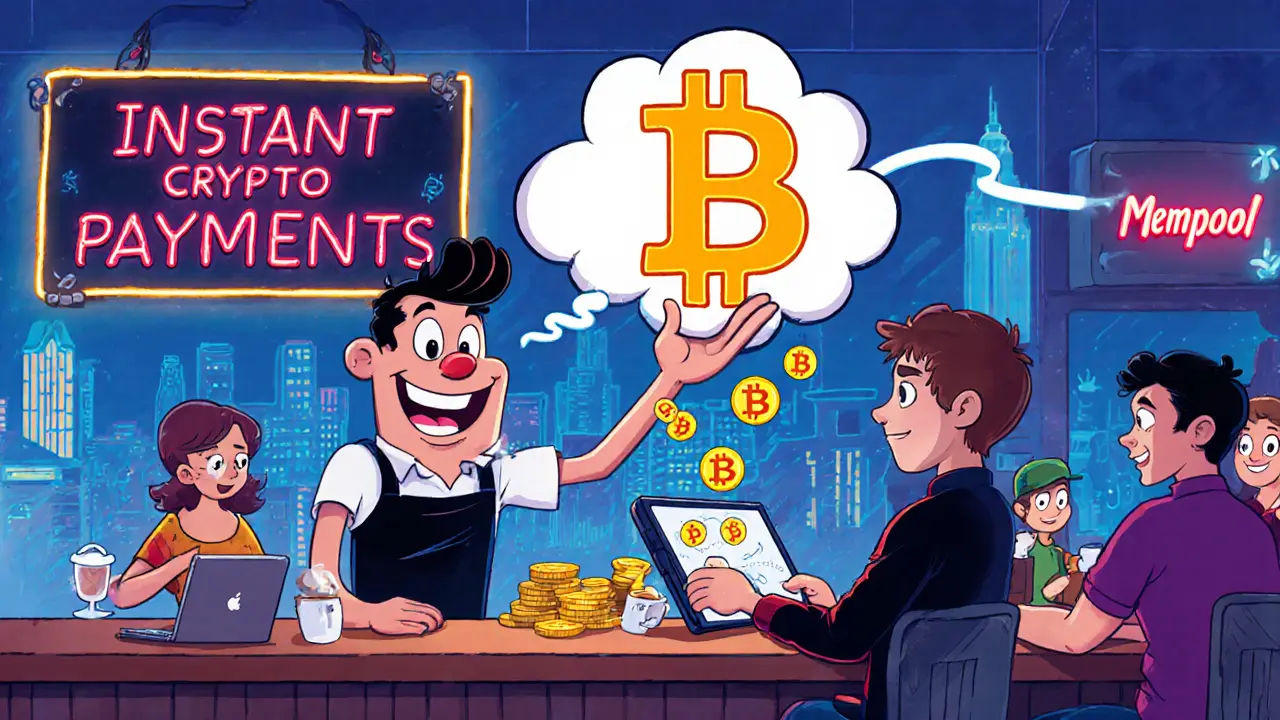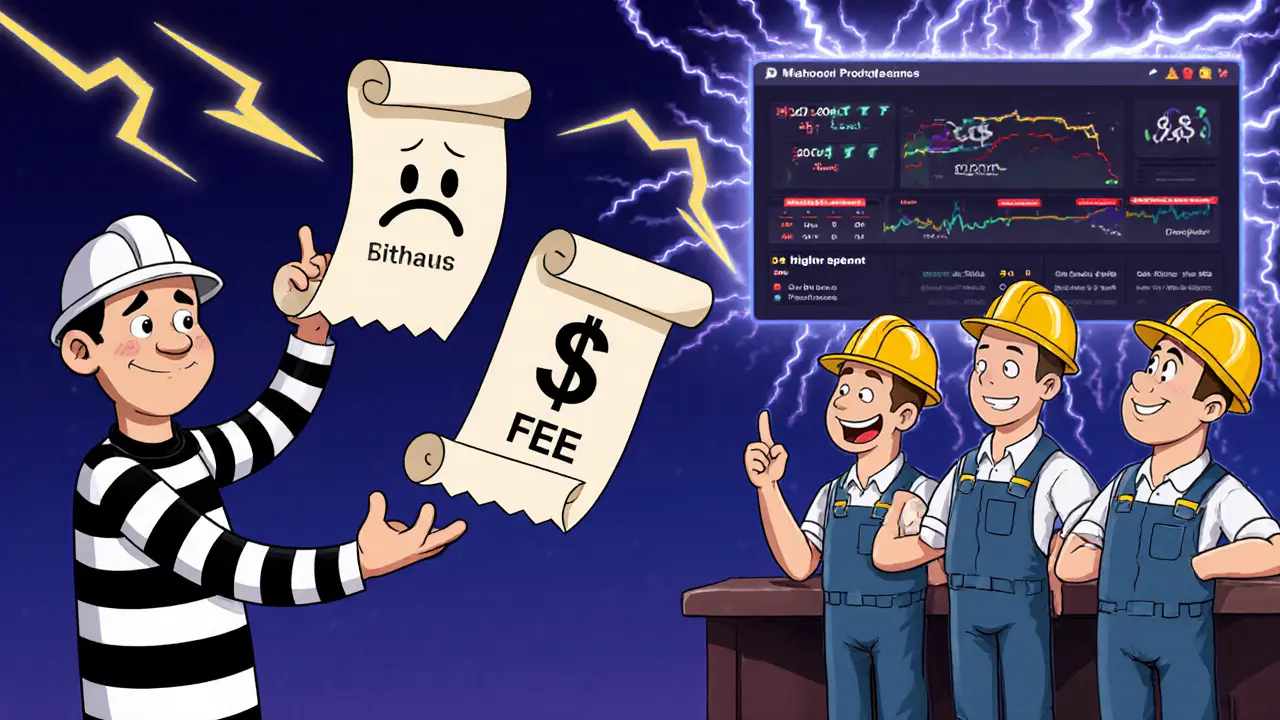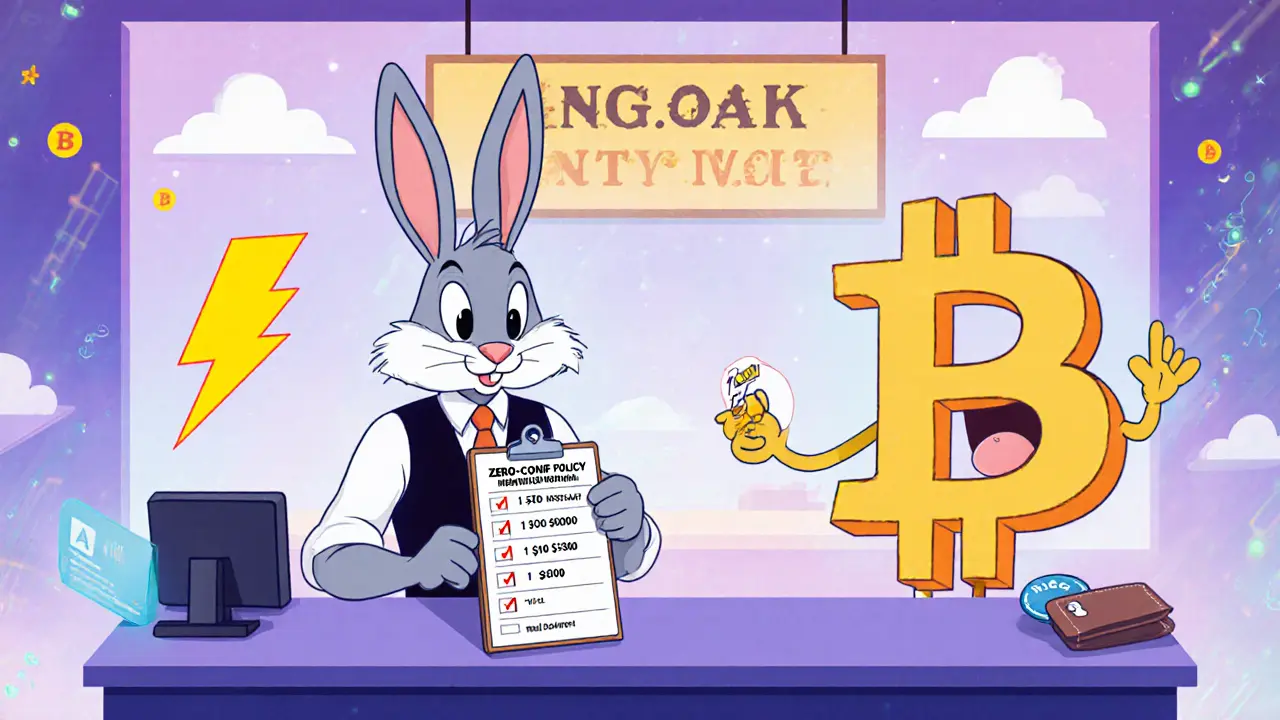Zero-Confirmation Transaction Risks in Crypto: What Merchants Must Know
 Jun, 13 2025
Jun, 13 2025
Zero-Confirmation Transaction Risk Calculator
Risk Assessment Results
Transaction Value: $0.00
Sender Reputation: Medium
Network Conditions: Medium
Risk Level: -
-
Understanding Risk Factors
Transaction Value
Smaller amounts are less attractive to attackers and thus lower risk.
Sender Reputation
Known, trusted senders reduce the chance of malicious intent.
Network Conditions
Congestion increases the window for double-spend attacks.
When a payment is shouted across the network but hasn’t been locked into a block yet, merchants face a trade‑off between speed and safety. Zero‑confirmation transaction is an unconfirmed cryptocurrency payment that lives in the mempool until a miner includes it in a block. It lets buyers get services instantly, but it also opens the door to several security pitfalls.
What exactly is a zero‑confirmation transaction?
In Bitcoin’s 10‑minute block cycle, waiting for a confirmed transaction can feel sluggish for a coffee shop or an online game. Zero‑conf transactions skip that wait by accepting the broadcasted payment right away. The transaction sits in the mempool a temporary pool where nodes store unconfirmed transactions and relies on the assumption that miners will soon confirm it.
The core risks you can’t ignore
The biggest red flag is the double‑spend attack an attempt to spend the same coins in two conflicting transactions. An attacker sends TransactionA to the merchant, then immediately broadcasts TransactionB with a higher transaction fee the incentive miners receive for prioritizing a transaction. If miners pick B, A disappears and the merchant loses both money and product.
Other threats include:
- Miner dishonesty: Some miners might deliberately ignore low‑fee zero‑conf payments, leaving the merchant hanging.
- Transaction reversal: If a transaction lingers too long without confirmation-especially under network congestion-it can be dropped from the mempool, sending the funds back to the sender.
- Congestion‑driven delays: Heavy traffic raises confirmation times, increasing the window for double‑spend attempts.
When does zero‑conf make sense?
Risk tolerance usually hinges on three factors:
- Transaction value: Small purchases (under $10) rarely attract attackers because the effort outweighs the reward.
- Sender reputation: Regular customers with a history of honest payments pose less danger.
- Network health: Low congestion and reasonable fees improve the odds of quick inclusion.
If you’re selling a $5 coffee, accepting zero‑conf is often justified. For a $1,000 software license, it’s a gamble you probably don’t want to take.

Mitigation tactics you can deploy today
While you can’t erase the inherent risk, you can stack defenses:
- Broad propagation: Broadcast the transaction to many nodes to increase its visibility and chances of being picked up early.
- Real‑time monitoring: Use a payment processor a service that watches the mempool for conflicting transactions that alerts you the moment a competing transaction appears.
- Fee bumping: Encourage customers to attach a slightly higher fee, nudging miners to prioritize the payment.
- Delayed finality: Accept the zero‑conf for service delivery, but wait for 1-2 confirmations before releasing high‑value goods.
- Risk‑based rules: Auto‑approve low‑value payments, flag medium‑value ones for a single confirmation, and demand full confirmation for anything above a set threshold.
Real‑world use cases that live with the risk
Many businesses have found a sweet spot where speed beats absolute certainty:
- Retail kiosks and vending machines that dispense snacks in seconds.
- Online gaming platforms that sell in‑game items or credits for a few dollars.
- Pay‑per‑view streaming services offering instant access to a video.
- Micro‑donation sites where users tip creators with fractions of a bitcoin.
In each case, the potential loss is small enough that the convenience win outweighs the security cost.
How does zero‑conf stack up against alternatives?
| Method | Typical Confirmation Time | Security Level | Ideal Use Case |
|---|---|---|---|
| Zero‑confirmation | Instant (seconds) | Low - vulnerable to double‑spend | Micro‑payments, vending, gaming |
| 1‑confirmation | ~10minutes (Bitcoin) | Medium - most attacks mitigated | E‑commerce, small‑to‑medium goods |
| Lightning Network | Instant (sub‑second) | High - channel‑based settlement | High‑frequency trading, large‑value instant payments |

Looking ahead: Layer‑2 and regulatory shifts
The crypto community is busy building faster, safer alternatives. The Lightning Network a layer‑2 protocol that creates off‑chain payment channels for instant, low‑fee transactions already powers millions of micro‑payments with near‑zero risk of double‑spending. As more wallets and merchants integrate Lightning, the reliance on zero‑conf will shrink, especially for higher‑value commerce.
Regulators are also paying attention. Some jurisdictions may require merchants to retain proof of confirmation before finalizing sales, especially for consumer‑protected goods. Keeping an eye on local compliance rules will help you avoid unexpected penalties.
Bottom line checklist for merchants
- Identify the maximum transaction value you’re comfortable accepting without a confirmation.
- Require a modest fee bump for zero‑conf payments.
- Use a payment processor that flags conflicting transactions in real time.
- Implement a tiered policy: instant delivery for <$10, 1‑conf wait for $10‑$100, full confirmation for >$100.
- Explore Lightning Network integration for high‑speed, higher‑value payments.
Frequently Asked Questions
Can I refund a zero‑confirmation payment if it later gets double‑spent?
No. Once the merchant has delivered the product, the payment is considered spent. If the transaction later fails, the merchant absorbs the loss unless they have a prior agreement to reverse the sale.
How do I know if a transaction is still in the mempool?
Most payment processors expose an API that returns the transaction’s mempool status. You can also query public nodes via RPC calls to check getmempoolentry.
Does a higher fee guarantee my zero‑conf payment will be confirmed first?
A higher fee dramatically improves the odds, but it’s not a 100% guarantee. Network congestion and miner policies still influence final selection.
Are there any blockchain networks where zero‑conf is practically safe?
Networks with sub‑second block times (e.g., some proof‑of‑stake chains) reduce the window for double‑spending, but the vulnerability still exists. Layer‑2 solutions like Lightning are safer for instant payments.
Should I disable zero‑conf acceptance altogether?
Not necessarily. Evaluate your average transaction size, customer base, and risk appetite. A balanced policy often yields the best user experience without exposing you to large losses.
Carol Fisher
June 13, 2025 AT 02:34Protecting your storefront from zero‑confirmation double‑spend attacks is a patriotic duty, and merchants who ignore these risks are betraying US consumers 📢🇺🇸. Use risk calculators, set transaction limits, and demand confirmations for anything above a few dollars. The crypto ecosystem thrives only when honest businesses enforce proper safeguards 🚀.
Melanie Birt
June 14, 2025 AT 06:21Here’s a quick rundown: keep a white‑list of trusted customers, monitor network congestion, and configure your payment gateway to auto‑hold funds until at least one block confirmation. This way you balance user experience with security, and you avoid costly chargebacks :)
debby martha
June 15, 2025 AT 10:07i kinda think this whole zero‑conf talk is overhyped, lol. small spends are fine but once you get into big tickets, just wait a sec. dont need a whole lecture about it.
Orlando Lucas
June 16, 2025 AT 13:54When we consider the nature of zero‑confirmation transactions, we confront a paradox at the heart of digital trust. On one hand, the allure of instantaneous settlement promises a seamless user experience, echoing the very ethos of blockchain’s decentralised promise. On the other hand, that immediacy opens a temporal window in which malicious actors can attempt double‑spend attacks.
Philosophically, this tension mirrors the classic conflict between freedom and security: the more we grant freedom to the network to process transactions instantly, the more we expose ourselves to potential abuse.
Risk assessment, therefore, is not merely a technical exercise but an ethical one. Merchants must ask themselves what level of risk they are willing to embed in their brand identity.
If a retailer prides itself on cutting‑edge convenience, they might accept a higher exposure, perhaps by limiting transaction size or by employing reputation‑based scoring. Conversely, a brand built on trust and reliability might enforce a mandatory confirmation for all purchases, regardless of amount.
Network conditions also play a pivotal role. During periods of high congestion, the probability of forks or reorgs rises, subtly increasing the attack surface. Observing mempool dynamics can provide early warnings that the network is stressed, suggesting merchants should tighten their policies temporarily.
Sender reputation adds another layer. A known, repeat customer carries a lower probabilistic threat, which can be quantified through historic on‑chain behaviour. Yet we must beware of over‑reliance on reputation scores that may be gamified or spoofed.
In practice, the integration of a risk calculator into the checkout flow allows for dynamic adjustments. By feeding transaction value, sender reputation, and real‑time network congestion into a scoring algorithm, merchants can receive a real‑time confidence level and an actionable recommendation.
From an economic perspective, the cost of waiting for a single confirmation-often a few minutes-must be weighed against the potential loss from a successful double spend, which could be orders of magnitude larger.
Moreover, regulatory considerations cannot be ignored; some jurisdictions may impose compliance requirements that effectively mandate waiting periods for crypto payments.
Ultimately, the merchant’s decision matrix should be transparent, documented, and revisited regularly as the ecosystem evolves.
Only by marrying technical insight with ethical deliberation can we navigate the zero‑confirmation landscape responsibly.
Philip Smart
June 17, 2025 AT 17:41Look, anyone who thinks you can just ignore zero‑conf risk is living in a fantasy. The blockchain doesn't magically fix fraud; you still need proper safeguards, or you'll get burned.
Nina Hall
June 18, 2025 AT 21:27Great points! 🌟 By blending smart risk thresholds with a friendly checkout vibe, merchants can keep both security and customer happiness in perfect harmony.
Lena Vega
June 20, 2025 AT 01:14Setting a minimum confirmation for high‑value sales is a smart move.
Sanjay Lago
June 21, 2025 AT 05:01Totally agree - a little extra wait time for pricey items actually builds trust, kinda like when you see the ‘processing…’ bar and know they’re double‑checking.
arnab nath
June 22, 2025 AT 08:47Everyone talks about confirmations, but have you considered that the miners might be colluding with hidden agencies to manipulate the mempool? The risk is far deeper.
Nathan Van Myall
June 23, 2025 AT 12:34Observing the pattern of network congestion shows a clear correlation with increased double‑spend attempts, indicating that merchants should dynamically adjust thresholds rather than use static values.
Manas Patil
June 24, 2025 AT 16:21From a fintech‑ops perspective, integrating a risk‑assessment API that leverages Bayesian inference can significantly enhance the predictive accuracy for zero‑conf attacks, especially during peak mempool load.
Annie McCullough
June 25, 2025 AT 20:07i think everyone overcomplicates this its just a matter of setting a simple threshold the market will self‑regulate lol :)
Lady Celeste
June 26, 2025 AT 23:54Another generic guide, as if merchants haven't already been scammed by these vague "best practices" for years.
Ethan Chambers
June 28, 2025 AT 03:41Honestly, if you’re still reading this you’ve missed the point – true security isn’t about confirmations, it’s about rethinking the entire payment paradigm.